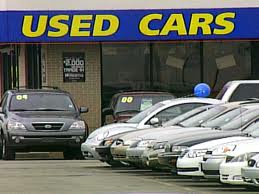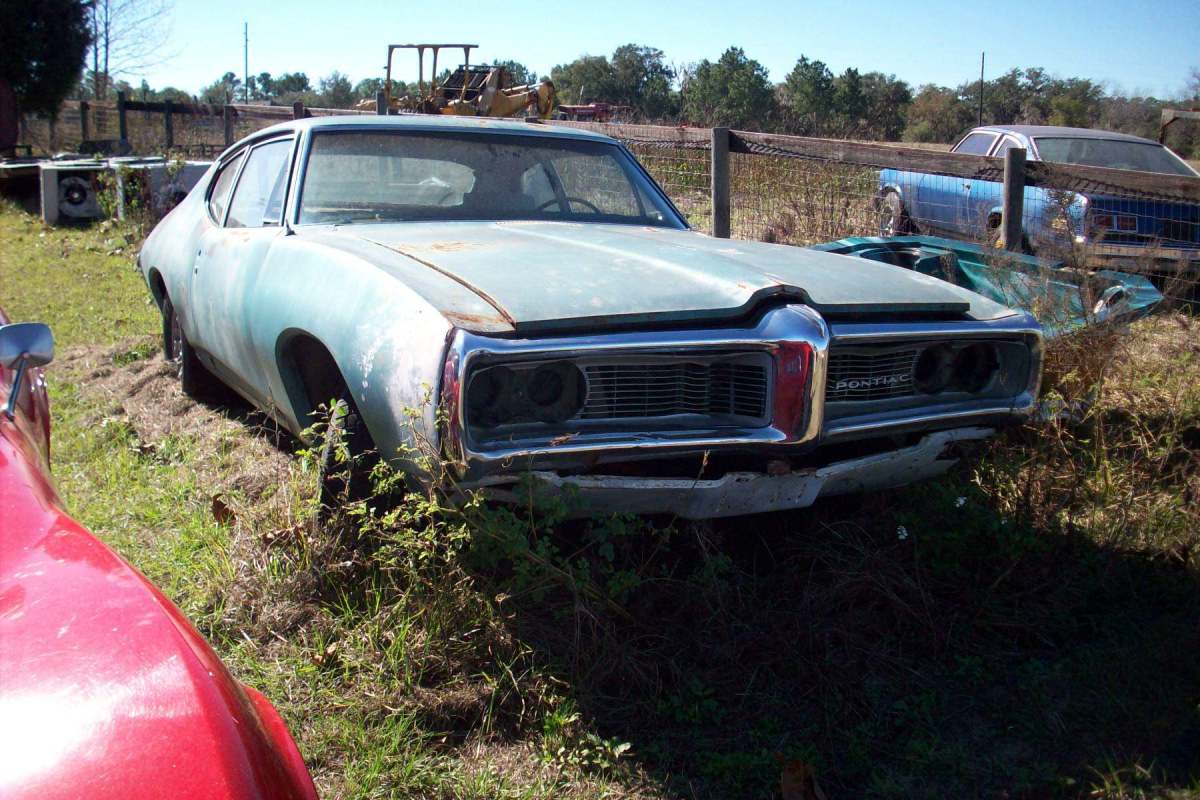Top Used Car Buying Tips

Used Car Buying Tips
This article is about Used Car Buying Tips and is full of useful things that you can do to test a car's mechanical reliability. These days' money is tight everywhere. We are in the midst of an economic downturn, and people are feeling it all around. One of the first things that anybody will do when money is tight, is find ways to scrimp and save. The first way to save is to cut back on major purchases, or at the very least, find ways to save money on these major purchases, when they can't be avoided. For instance; buying a pre-owned vehicle can save you a substantial amount of money over buying a new one. You wouldn't want to go into a car dealership completely uneducated on buying a used car, of course.
Now, these few things that I'm going to share with you are basically, just to see if the car that you are looking at is worth taking to a mechanic, to get an opinion. When you are approaching the car, take a quick look beneath it checking for puddles or spots where it was, or is leaking any fluids.
A Brief History
Why am I writing this article about you may ask. Well, when I first met my son's mother, who is also my fiance, it was August of 2005 and she was driving a beat up old 1986 Chevy celebrity wagon. Now, for those of you who aren't familiar with this vehicle, first I would like to congratulate you on that, but having two sons already, she needed the room for car seats. I shouldn't bad rap the car, for as ugly as that damn thing was, it ran great! Anyway, needless to say, she got tired of the old beast and decide to find herself something a little nicer. So, she took herself to the local shyster used car lot. You know the type, in house financing, give anybody a car, but when you miss just one payment, even if it's your last one and here comes the Bob Watson repo truck to take back the car, get it detailed and it's back on the lot all in no more than two days.
Now, this girl being as much of a sweetheart as she is and having just met me, said that she didn't want to be a burden by asking me to help her buy a used car. This girl, even if only by reputation, knew full well that I was a car guy. I'm the guy that all of my friends come to for free brake jobs and tune ups and usually, I don't mind. They would come over with the parts and a case of beer and we get it done (I think the term is alley mechanic). Anyway, to make a long story short, she got took. Now, remember I said that this was back in 2005. She bought a put together piece of S%!# 2000 cavalier for $10,000 at 25% interest! We're talking about a $1,000 car at best. So that's my story, now I'm going to give you some advice about buying a used car. I recommend finding a trustworthy mechanic to give you some used car buying tips. For the most part mechanics get a bad rap. Don't get me wrong, there are some swindlers out there, but these are the guys who give us good guys a bad name. There are a lot of good mechanics out there who, like me would look a car over for you for free, if they aren't busy, in which case you should offer to throw them twenty or thirty dollars for helping you out.

Used Car Buying Tips
-
How Well Does it Run- First and foremost, you want to make sure that the engine and transmission don't have any major problems and you can do this quite easily. The first thing to do is check the oil, just to be sure that the car has oil in it ( I've seen cars on the lot with no oil in them). Then you can start the car. When you start the car, watch the tail pipe for smoke (depending on the mileage, it is actually quite common for a used car to smoke a bit) what you are looking for is, how much did it smoke and what color was the smoke. When a car smokes on start-up it just means that some oil got past the valve seats and into the combustion chamber and upon starting the car it burns of immediately. This is not a major issue for a used car, however, if the car continues to smoke for any length of time after you start it, this could be a much bigger and all together different problem. if you can get the salesman to shut up long enough, listen for sputtering or hesitation. While running the engine should sound smooth. Now, while you're listening to it run, watch the engine. What you're looking for is to see if the engine is “jumping” around too much. When the car is idling you should barely be able to see the engine move at all. Next, what you'll want to do is race the engine just slightly holding the idle at around 1500-2000 RPMs and repeat the previous steps, listening for any hesitations and you should be able to see the engine from inside the car with the hood open, watch again to see if the engine is “jumping” too much. Now, while you're in the car with the engine running hold the brake and put the car in gear. With the car in drive and your foot firmly on the brake, what you'll want to do is again, slightly race the engine, bringing the RPMs up to 1500-2000. By doing this you will make any misses or vibrations in the engine a lot more noticeable and all that much easier to spot. At the same time you will be testing obvious things like the brakes but more importantly, you'll be checking the transmission. If when you are holding the engine at an elevated idle speed you notice the engine seems to begin to race higher on its own, there could be a problem (we'll get into this further later on). The last thing to do is check the oil again. Five or ten minutes after shutting off the car you should check the oil again. Once the car has had a chance to run for a while and get good and hot (the car reached its operating temperature). After the oil has all had a chance to run back down into the oil pan, check it to see if it looks at all “foamy”. If the oil is a mid to dark brown color, this means that it has recently been changed. If the oil is just black, that's fine too. This just means that it has been in the car for a while and if you do end up buying the car you should change it, which I'll explain in another article. If it is foamy however, this means that somehow there is water is the oil and regardless of how it got there this never ends good. Water in the oil means at least one of a few different things. The first of which is that it's got a blown head gasket and depending on how cheap you're getting the car this can be a major issue. It could also mean that the block or head is cracked, in which case it's time to leave (without the car that is).
-
Transmission- You're going to want to check the transmission fluid first, if the fluid is low in an automatic transmission it's very likely that it will slip*. When you check the fluid, you want to check the color first of all. Transmission fluid is a bit more tricky to diagnose than motor oil. The vast majority of the time, transmission fluid will be red. You want to check the dip stick for meat shavings, which I'm sure that I don't have to tell you, isn't good. Last, you want to smell the end of the dip stick with a dip on it. What you're hoping not to smell, is a burned smell. If this is the case, it could mean that the transmission is not too healthy and the clutch plates are getting worn. Unlike a manual or stick shift transmission, a clutch is not an easy and fairly cheap fix. The next thing to do is to drive the car. Before you even leave the car lot with the vehicle you are going to want to once again, with the engine running and your foot firmly applying the brakes is elevate the idle to about 1500 – 2000 RPMs. The car should feel like it wants to take off. This is the same thing that you did when checking the engine for a miss, hesitation or vibrations.
-
The Road Test-Once you've done this, take the car for a casual drive. Drive it the way that you normally would, paying particular attention to how it performs taking off from a dead stop. This is the best time to evaluate how well a car responds to the daily rigors of stop and go traffic. Another thing to pay close attention to while you are out driving the vehicle is the exhaust pipe. You should watch the tail pipe every time that you take off from a stop taking note of whether or not the car smokes and if it does how much and what color (White, Blue or Black) each color means a different potential problem. You should also be paying attention to how the brake pedal feels Stiff, spongy, or it goes to the floor to easy. Keeping in mind that different makes of vehicles brakes tend to have a slightly different feel to the. So, if you've been driving a Ford for 10+ years and are now test driving a Chevy, don't automatically be alarmed if the brakes and steering feel a bit off from what you are used to. A particularly notorious make of vehicle for this is Dodge/Jeep/Eagle. Which brings us to our final bit of the road test, the steering. The way that a car steers is particular to its manufacturer. It's kind of like way back when they made those big old boats for cars and you could turn the steering wheel one and a half turns before the car would respond. Well, it's not quite that bad anymore, however, every make of car is different but, basically they're all pretty much the same when it comes to test driving them. First off you want to start out moving the wheel slightly side to side, gradually increasing how far you are turning it, until you notice the car beginning to respond. This will give you an idea of how tight* the steering linkage is and if the ball joints or tie rod ends are in good shape. Another cheap and easy fix that I'll also explain in detail in another article.
In this article, I have explained some very simple procedures to help you to decide whether or not the used vehicle that you are considering buying is worth taking in to a mechanic for a second opinion, so to speak. This is a comprehensive checklist for auto diagnosis but, in no way takes the place of the opinion of a certified mechanic. I, myself am an ASE certified mechanic, however, without seeing or going over the vehicle myself, would not recommend using this list as the sole factor in your decision making process. I emphatically recommend that if you are not mechanically inclined to say the least, you get the opinion of at least someone whose automotive expertise and knowledge that you feel you can trust.
I will be following this article up with a series of step by step, in depth, do it yourself automotive repair articles. These articles that I am writing are meant to save the average mechanically inclined “Joe Fix It” individual a lot of money by doing some of these simple repairs yourself. Just to give you an idea of how much you can save, a friend of mine went out and spent over $600.00 on a brake job for his mustang. A few weeks later I did a brake job on the same car. It took me about an hour and the parts costed less that $50.00. Auto repair shops make a ton of money. They don't have to be ripping you off to rip you off.
-
*slipping is when a cars engine races and the car doesn't move. A transmission can have various levels of slippage.
- *how tight a cars steering is, means how much you have to turn the steering wheel before the car responds.
Other great articles by Aidensdada
- Joe Paterno Misguided Loyalty; Rest in Peace
This article is written in the memory of Joe Paterno. A legendary man who who was larger than life and threw away 65+ years of his life for misguided loyalty to a friend. Rest in Peace Joe, Rot in Hell Jerry! - How to Spot a Car That's Been in a Major Collision
This hub describes some of the underhanded techniques employed by used car dealers to hide the damage done to a vehicle that has been in a major collision, and how you can spot them. As with any used car, I can't emphasize enough the importance of ha - Do it Yourself Brake Job
In this article, I'll walk you through a do it yourself brake job on your car. This step by step disk brake repair guide will surely save you a ton of money.







